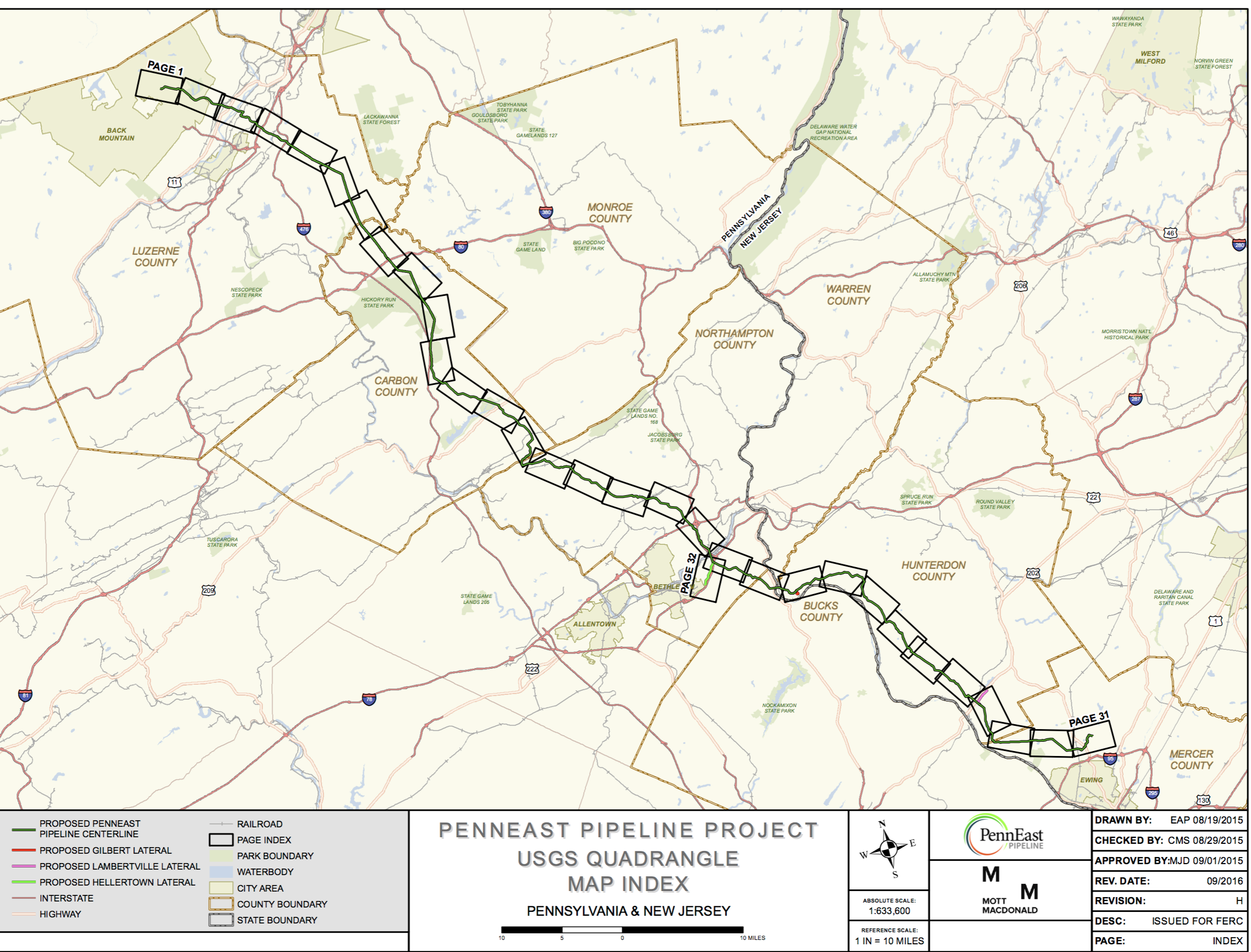PennEast Pipeline Submits Seven Route Deviations in New Jersey to FERC

PennEast Pipeline Company LLC has filed with the Federal Energy Regulatory Commission (FERC) seven route deviations in New Jersey in PennEast’s continued effort to reduce impacts on endangered species and wetlands, maintain co-location with existing rights of way and address concerns expressed by landowners and regulators.
The route modifications further minimize environmental impacts through optimized co-location with existing electric transmission lines, wildlife habitat avoidance and reduced tree clearing.
“We are continually reviewing the PennEast Pipeline Project, seeking ways to maximize benefits to the region by improving the route and reducing environmental impacts,” said Peter Terranova, chair of the PennEast board of managers. “The route changes filed today reflect the constructive feedback received from landowners, agencies and other stakeholders and demonstrate PennEast’s commitment to incorporating their input where safely and logistically feasible. These route modifications bring area families and businesses another step closer to receiving reduced energy costs that also will help advance the region’s economy.”
Among the key highlights:
• Reduced permanent impacts on forested wetlands by 64 percent
• Reduced impacts to endangered species, including a known salamander habitat in Delaware Township
• Incorporated 23 additional trenchless crossings to reduce impacts to C1 waterways
• Maintained co-location so that approximately half the route in New Jersey runs adjacent to existing overhead electric transmission lines, as requested by public officials and regulators.
• On the Gravel Hill Preserve, PennEast worked directly with PSE&G to place the line entirely within the cleared and decades-old existing right of way until exiting forested areas and reaching open space; a major step forward that significantly minimizes the need for tree clearing other than at the entry and exit points of the Preserve. Construction workspaces are all within PSE&G’s previously disturbed acreage.
• Additional overlap with PSE&G easements in New Jersey outside Gravel Hill will reduce PennEast’s permanent footprint from 50 feet to 35 feet, reducing the need for tree-clearing and workspace impacts.
Regarding the Gravel Hill Preserve in Holland Township, PennEast explored eight route alternatives based on regulatory feedback that would identify responsible deviations, including both mandatory receipt points with the Gilbert electric generating station, and avoidance of the Preserve. Those alternatives required significant impacts to county roadways that made avoidance of the Preserve impractical. Still, PennEast continued to work with stakeholders to explore viable options that reduce impacts on sensitive resources by overlapping with PSE&G easements. As a result of the latest deviation and despite its limited impact to the Preserve, new opportunities for open space preservation will still be created due to the state-required Green Acres mitigation process.
“This is a win-win in PennEast’s continued effort to balance environmental protection with the need for affordable natural gas that will power the region’s future,” added Terranova. “In New Jersey, specifically, more open space will be available than exists today, even as PennEast nearly has eliminated permanent impacts across Gravel Hill thanks to the new alignment within most of the pathway of PSE&G’s power lines.”
Terranova added that landowners who have opted to avoid working with PennEast are missing a key opportunity to help shape the best route possible and to collaborate on minimizing impacts. “PennEast continues to welcome constructive landowner engagement, and encourages landowners to contact their PennEast representative.”
On July 22, FERC released its Draft Environmental Impact Statement (EIS), which acknowledged environmental impacts from PennEast’s construction “would be reduced to less-than-significant levels,” and that no other pipeline could meet the capacity needs that the PennEast Pipeline is designed to meet.
More than 90 percent of the PennEast Pipeline’s capacity is subscribed under long- term contracts, years before it is approved or built. Dozens of business and labor organizations representing tens of thousands of employers and hundreds of thousands of employees across both states also support construction of the PennEast Pipeline.
Related News
Related News

- Keystone Oil Pipeline Resumes Operations After Temporary Shutdown
- Biden Administration Buys Oil for Emergency Reserve Above Target Price
- Freeport LNG Plant Runs Near Zero Consumption for Fifth Day
- Enbridge to Invest $500 Million in Pipeline Assets, Including Expansion of 850-Mile Gray Oak Pipeline
- Williams Delays Louisiana Pipeline Project Amid Dispute with Competitor Energy Transfer
- Evacuation Technologies to Reduce Methane Releases During Pigging
- Editor’s Notebook: Nord Stream’s $20 Billion Question
- Enbridge Receives Approval to Begin Service on Louisiana Venice Gas Pipeline Project
- Russian LNG Unfazed By U.S. Sanctions
- Biden Administration Buys Oil for Emergency Reserve Above Target Price




Comments